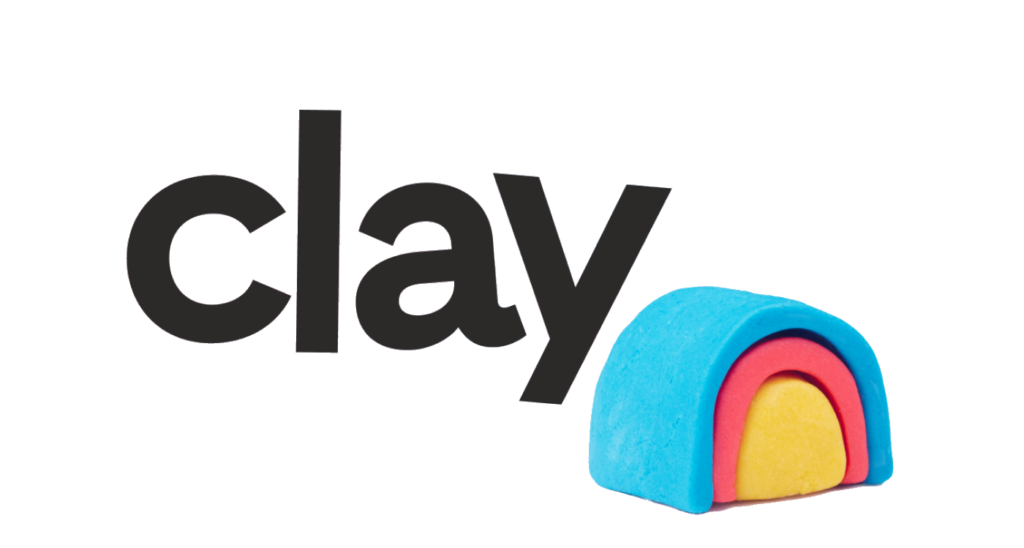Wrk
Connect Wrk with Webflow to automate workflows triggered by website events, form submissions, and CMS updates.

How to integrate Wrk with Webflow
Connecting Wrk to Webflow automates workflows that respond to website activity. When visitors submit forms, update CMS content, or trigger specific events, Wrk executes the corresponding automation sequences.
Choose your integration method based on technical requirements and control needs.
Third-party automation platforms offer quick setup for standard workflows. Code Embed elements provide flexibility for custom interfaces but require development work.
API-based integration gives you complete control over data flow, conditional logic, and complex synchronization. This means you can se tup real-time inventory updates, multi-step approval workflows, or bidirectional data syncs.
Connect through third-party automation tools
Third-party automation platforms like Zapier integrate Wrk with Webflow without writing code. These tools provide visual workflow builders that map Webflow events to Wrk automation sequences.
This integration method works well for standard automation patterns like lead processing, notification routing, and simple data synchronization.
To set up this integration, connect your Webflow account with Zapier, select trigger events like form submissions or CMS updates, then configure corresponding Wrk actions.
Common automation patterns:
- Form submission processing: Route Webflow form data to Wrk workflows for lead qualification, document generation, or multi-system updates
- CMS content synchronization: Trigger Wrk automation when CMS items are created, updated, or deleted
- Notification workflows: Send structured data from Webflow events to Wrk for processing and distribution across business systems
Embed custom code in Webflow pages
Webflow's Code Embed element lets you add custom HTML, CSS, and JavaScript directly to your pages. Use this to build custom integrations that connect Webflow pages to Wrk workflows, though you'll need to write your own integration code.
Add the Code Embed element by opening your Webflow project and looking it up through the Add panel or Quick Find search bar. After adding the element to your page, paste in the Wrk code and click Save & Close. Preview functionality, then publish your site to activate the integration.
Implementation approaches:
- Custom trigger interfaces: Write JavaScript that calls Wrk's Launch API when users interact with page elements
- Data capture forms: Build HTML forms that submit data to your own endpoint, which then triggers Wrk workflows
- Dynamic content display: Fetch data from your systems and display it on Webflow pages using JavaScript
You're responsible for implementing the connection between your embedded code and Wrk's API. Test functionality in preview mode before publishing, as custom code requires proper domain configuration. And may need Cross-Origin Resource Sharing (CORS) configuration if calling external APIs.
Build with Webflow and Wrk APIs
API-based integration gives you full control over data flow between platforms. This enables automated synchronization, complex conditional logic, and custom workflow triggers that respond to specific Webflow events.
In other words, you build the integration layer that connects Webflow's content and user interactions to Wrk's automation capabilities.
The Webflow API provides programmatic access to sites, CMS collections, and form submissions. Webflow webhooks send POST requests to specified URLs when events occur, triggering corresponding Wrk workflows through the Wrk Launch API.
Authentication and access:
Set up authentication using Site Tokens for site-specific access or OAuth tokens for broader application access. Both require Bearer token authentication in API requests. Configure webhooks to monitor specific event types with automatic retry attempts for failed deliveries.
Core integration capabilities:
- Automated CMS synchronization: Use webhook events (
collection_item_created,collection_item_changed,collection_item_deleted) to trigger Wrk workflows - Form submission processing: Route form submission data to Wrk workflows through the Launch API
- Conditional workflow execution: Build logic that evaluates Webflow data and selectively triggers appropriate Wrk automation sequences
Trigger Wrk workflows from Webflow events
Configure Webflow webhooks to initiate Wrk automation when specific events occur. This enables automated responses to website activity without manual monitoring or intervention.
According to Wrk's sync workflow documentation, trigger workflows using the Wrk Launch API endpoint: POST https://account.wrk.com/api/trigger/launch/. Configure Webflow webhooks to send event data to this endpoint, including necessary authentication headers and payload data.
Implementation pattern:
- Create webhook in Webflow pointing to your integration endpoint
- Receive webhook
POSTrequest containing event data - Transform Webflow payload to match Wrk workflow requirements
- Call Wrk Launch API with transformed data and authentication
- Handle response and implement error recovery logic
Common triggers:
- CMS updates: Launch document processing workflows when new content items are published
- Form submissions: Initiate lead qualification or customer onboarding sequences
- E-commerce events: Trigger order fulfillment or inventory management automation
Note: Webflow Cloud limits apply to webhook configurations and API call frequency. Plan your integration architecture to respect these constraints while maintaining responsive automation.
Sync CMS data between platforms
Combine the Webflow CMS API with webhook listeners to build data synchronization that keeps Webflow content aligned with data managed by Wrk workflows. This works for scenarios where Wrk processes information that needs to display on Webflow sites or where Webflow content changes should update records in connected systems.
Use the Webflow CMS API to read, create, and update collection items programmatically. Combine this with webhook listeners that detect changes in either system, then apply updates to maintain consistency.
Synchronization scenarios:
- Product inventory: Update Webflow product listings when Wrk workflows process inventory changes from backend systems
- Content approval: Publish Webflow CMS items after Wrk completes approval workflow sequences
- Status tracking: Display workflow progress on Webflow pages by syncing status data from Wrk automation
Implement conflict resolution logic for simultaneous updates and use timestamp fields to track synchronization state. The Collections API provides full CRUD operations for managing CMS items programmatically.
What you can build
Integrating Wrk with Webflow automates workflows that respond to website activity, process visitor data, and synchronize content across business systems.
- Automated lead qualification systems: Route form submissions to Wrk's analysis workflows for processing, then use the results in your business systems
- Property listing portals with tenant screening: Build real estate sites where new applications automatically trigger Wrk's document verification and background check workflows
- E-commerce order processing automation: Connect product purchases to Wrk workflows that handle fulfillment coordination, inventory updates, and customer communication sequences
- Client onboarding websites: Create service intake forms that initiate Wrk automation sequences for contract generation, account provisioning, and project setup
Frequently asked questions
Webflow supports two authentication methods, depending on your integration scope. Site Tokens provide access to a specific site's data and require less configuration for single-site integrations. OAuth tokens enable broader application access across multiple sites and user accounts.
Both methods require bearer token authentication in API requests. Include the token in the Authorization header:
Authorization: Bearer YOUR_TOKEN. Generate Site Tokens through Webflow's site settings under the Integrations tab. OAuth implementation requires registering an application and implementing the standard OAuth 2.0 flow documented in Webflow's authentication reference.Webflow webhooks send
POSTrequests when specific events occur, enabling automated workflow triggers. Configure webhooks for form submissions, CMS collection changes, e-commerce transactions, and membership events.CMS webhook events include
collection_item_created,collection_item_changed,collection_item_deleted, andcollection_item_unpublished. Form webhooks fire on submission. E-commerce webhooks track order status changes and inventory updates. Configure up to 75 webhooks per trigger type through the Webflow webhooks interface, which includes automatic retry attempts for failed deliveries.You can build custom status displays using Webflow's Code Embed element, which accepts HTML, CSS, and JavaScript. This requires writing your own code to query workflow status and render the information.
Add the Code Embed element from the Add panel or use Quick Find. Write JavaScript that retrieves status information from your own backend systems that track workflow progress. The element supports custom styling and dynamic updates through your code.
This approach requires development work to implement the connection between Webflow pages and workflow status data. Test functionality in preview mode before publishing, as custom JavaScript may require proper domain configuration.
CMS synchronization uses Webflow's webhook system as triggers and the Collections API for data operations. Configure webhooks to monitor
collection_item_created,collection_item_changed, andcollection_item_deletedevents, then trigger corresponding Wrk workflows.According to Wrk's sync workflow documentation, launch workflows using
POST <https://api.wrk.com/v1/launch/sync> with event data from Webflow webhooks. For bidirectional sync, Wrk workflows can call the Webflow CMS API to create or update collection items when automation completes. Consider implementing conflict resolution logic and timestamp tracking to handle simultaneous updates.Yes, third-party automation platforms provide visual workflow builders that require no coding. Zapier's Webflow integration lets you create automated workflows through a drag-and-drop interface, selecting trigger events from Webflow and corresponding actions in Wrk.

Description
Wrk is an automation platform that executes workflows through API calls. It processes data, handles documents, and connects multiple systems through integrations. Workflows can include human verification steps for accuracy checks.
This integration page is provided for informational and convenience purposes only.

PostgreSQL
Connect PostgreSQL with Webflow to sync database records to CMS collections and build data-driven websites.

xAttribute
Connect xAttribute with Webflow to manage custom HTML attributes through visual controls and templates.

PostgreSQL
Connect PostgreSQL with Webflow to sync database records to CMS collections and build data-driven websites.

Clay
Connect Clay’s data enrichment and automation with Webflow to build personalized, dynamic landing pages at scale — automate content updates and sync enriched data to CMS collections, no code required.

Xano
Connect your Webflow site to a powerful no-code backend platform that handles databases, APIs, and business logic — all without writing server-side code.

Wix
Connect Wix's business tools and scalable infrastructure with Webflow's design flexibility to create powerful, integrated web experiences. This integration enables agencies to design in Webflow while managing content in Wix, synchronize data between platforms, and leverage the strengths of both builders.
Zoho Flow
Connect Zoho Flow with Webflow to automate workflows, sync form data, and trigger actions across 1,000+ apps.

Whalesync
Instantly sync data between Webflow and other apps like Airtable, Notion, or Google Sheets. Whalesync is the easiest way to sync data from Airtable to Webflow. Simply map the fields in your Webflow CMS to create a real-time, two-way sync. We support text, rich text, images, dates, selects, and even multi-reference fields out of the box. Whalesync gives you the power of real-time, two-way data syncing across all your apps, all without code.

Supabase
Connect Supabase's open-source backend platform with Webflow to add real-time databases, authentication, file storage, and serverless functions to your visually designed websites. Build dynamic applications without traditional coding constraints.


